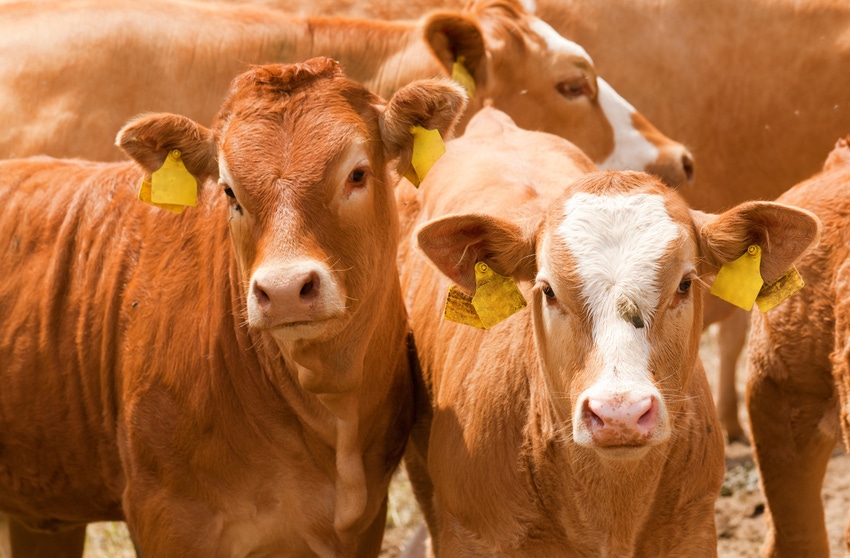Shipping calves this summer? Watch for these 11 shipping stress symptoms
According to the National Agriculture Statistics Service, shipping fever costs the United States cattle industry $624 million annually. Here's how you can avoid shipping stress in your operation.
July 8, 2015

Sponsored Content
Ready or not, summer is here. For many American families, this means it is time to pack up the car and make the long drive to your favorite vacation spot. The process of transportation can be difficult for everyone involved, and the same is also true for cattle as they make their way to the feedlot.
Imagine how feeder cattle must feel with the tremendous stress placed on them during the transition from the ranch to the feedlot. During a period of two to three days, calves are often weaned, sold at auction, trucked as far as 3,000 miles and placed in a completely different environment with different food, water and social structure. This can cause stress to the animal and take money out of your pocket.
Many major feedlot management problems such as the occurrence of disease, death loss, and poor performance of calves are associated with the shipping event. According to the National Agriculture Statistics Service, shipping fever costs the United States cattle industry $624 million annually.
An animal under shipping stress will exhibit symptoms such as:
A lack of appetite
Very loose manure or a very dry small volume of manure
Drooping cold ears
“Gaunt” look or no fill
General lethargy and head down
Shivering during cold weather
Mucous hanging from the nose
Coughing
Excess mud/manure on hair
Blood in manure
Kicking at the belly (hardware or calculi)
Not every animal shipped will demonstrate signs of shipping stress immediately after a move. Generally, larger animals have less tension. For example, a 250-pound calf would make a trip easier than a 185-pound calf and a 550-pound easier than a 450-pound animal. Weather can also play a part in causing strain. Cattle can become more susceptible to stress during very cold weather and wet weather, when cattle can slip on wet surfaces and during extreme heat.
For this reason, producers need to ensure their cattle get off to the right start once they arrive at the feedlot. Unhealthy or stressed cattle that arrive at the feedlot can be more vulnerable to respiratory and enteric disease, especially if their previous home had a poor nutritional program. Feedlot owners will often see a lag in performance for the first 30 days and a spike in death loss and overall morbidity.
In addition to vaccination programs, biosecurity measures, early detection of sickness and treatment of disease, a key element of overall health for receiving cattle is promoting proper gut health through nutrition. Gut health management is essential for building a foundation for performance and profitability in beef production. As animals transition to the feedyard, healthy cattle will eat and produce more efficiently, ensuring they are performing at their maximum potential. The Alltech Gut Health Management program focuses on supporting animal performance by promoting rumen efficiency, building natural defenses and maximizing growth.
While many feedlot deaths are unexplainable, cattle producers can use good nutrition and management to help combat these sudden deaths. No matter what management technique or nutritional application an operation finds successful, transportation and the proper receiving of cattle are vital to overall profitability. So this summer as you pack up to drive on vacation, remember the stress of travel can have big ramifications on your trip as well as the profitability of your operation.
You might also like:
How to prevent & treat pinkeye in cattle
Is your corn silage problem-free? Monitor it to make sure
Feedyard losses: How bad is it?
What's the best time to castrate calves? Vets agree the earlier the better
7 tools to win the war against cattle flies
You May Also Like


.png?width=300&auto=webp&quality=80&disable=upscale)
